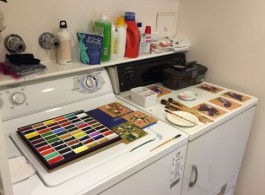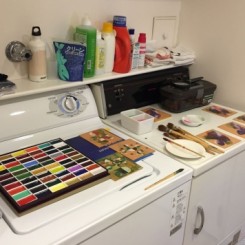White Cube, Hong Kong
Preview: Thursday 26 May, 6-8.30pm
27 May – 20 August 2016
Hong Kong
White Cube is pleased to present an exhibition of new work by Gabriel Orozco. This is the first solo show by the artist in Hong Kong.
Orozco developed his method of working in the early 1990s: he would select materials that were local and to hand, often found or ready-made, and decide on a few basic ‘rules’ to adopt, as if he were setting himself a kind of fictional exercise. This has allowed his work to be very open or porous to the place it was made, as well as to the chance incidents that could upset even the strictest of systems. His choice of a geometric lexicon of circles and circular rotations, often overlaid onto forms in nature, sets in train a series of movements and counter-movements and demonstrates a preoccupation with nature that has continued to the present.
For the last year, the artist has been based in Tokyo and all the work in the current exhibition has been made in his apartment there. Although at first sight this installation of watercolour paintings, propped against walls and placed on shelves, may look startlingly different from some of his best known works like Black Kites (1997), it has, in fact, been made according to similar procedures and with the same intense interests in matter and process, movement and circulation. Only this time, Orozco has used the materials that he found around him in Japan. The watercolours are on gold cardboard grounds in standard sizes, all readily available from a nearby Tokyo art suppliers. The ‘standards’, including the size of the brushes, are of course not universal but specific to Japanese traditions. Gold, in this context, is not a precious material but provides a light-reflective ground for exploring the material properties of watercolour.
Rather than making aesthetic colour choices, Orozco is more interested in colour as matter, and in the way it moves through successive states. Watercolour paint, after all, begins as coloured pigment and becomes liquid. It flows and pools in parts and patches, and when it dries may appear to revert again to dust particles. Orozco sets himself a series of exercises, using watercolour, a medium that is often seen as marginal or trivial in the West yet the most revered form of art for the Chinese and Japanese masters in the East. It is almost as if he deliberately makes himself a stranger to his medium, distancing himself from the expressive vocabulary of gesture at the same time that he deploys it. Gestural brushstrokes of colour intersect with the axial points of a grid and his distinctive lexicon of coloured circles or part-circles. It is hard to say how far one merges with, or even sabotages the other; as a consequence, the categories of spontaneity and discipline within traditional Chinese painting have been transformed through his own improvisational method. Orozco has always talked about his work as ‘organic’, about a geometric pattern ‘growing’, even though it might consist of grids and circles. He has frequently used organic materials like leaves or bones, but has also described how all his work grows outward from a centre, like a fruit. Rather than accept prevailing conceptions of the natural, he once said that his approach was to say ‘I don’t know what nature is’, and to work from there. The painting of nature, together with the pleasure and awe it inspires, is at the very origin of painterly aesthetics and yet it was scorned within modernism, especially by abstract artists such as Mondrian. Just as nature has become a lost subject of contemporary art, so too it no longer stands for unity and permanence as it once did, since nature’s ecologies have become increasingly fragile and devastated through human intervention.
Rather than the conventional associations of a rational and mechanical order, Orozco makes geometry function as an extension of the natural world. So much so, that in his hands, claims about what is natural and what is artificial are always open to doubt. In this installation of watercolours, loosely grouped into landscapes, stains and shapes, he pays particular attention to processes of accumulation and accretion: patterns of circles or pools of pigment gather and collect across a range of different media. In the end it is hard to say which is more subject to artifice: pools or stains or part-circles of coloured pigment. By mimicking patterns of growth and dissemination, accumulation and liquefaction, the question of ‘nature’ or ‘culture’ hovers in a continual state of uncertainty.


